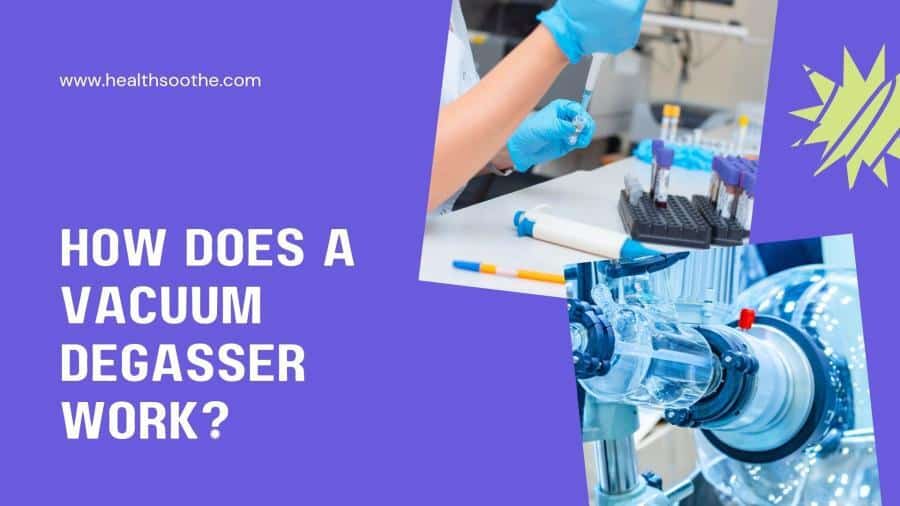Degassing or degasification is the process of removing excess or unwanted gas from liquids or solids. There are two types of degassers to remove trapped gases like oxygen and hydrogen sulfide: vacuum degassers and centrifugal degassers. However, vacuum degassers are considered more efficient because of their capacity to eliminate gases from sensitive systems that cannot function with trapped gases.
Vacuum degassing is mainly used during laboratory testing, water treatment, and soil purification. So, how does a vacuum degasser work? A vacuum degasser is a type of gas-liquid separator that works by simultaneously creating a vacuum around the liquid and lowering the pressure inside the container holding it. The lowered atmospheric pressure combines with the vacuum formed around the liquid to draw gas molecules out of the liquid.
In laboratories, vacuum degassers remove trapped air from samples and chemical reagents. For instance, laboratory vacuum ovens are used to dry out heat-sensitive materials completely. Vacuum degassers are generally used with other laboratory devices, such as rotary evaporators and vacuum pumps.
Vacuum degassers are also used in manufacturing industries, including food and beverage, oil and gas, chemical, and healthcare, to remove dissolved gases from inputs. They remove dissolved gases from the liquids used to manufacture beverage products like beer, wine, and juice.
How Does A Vacuum Degasser Work?
The most common type of vacuum degasser consists of a chamber with a pump that creates a vacuum. The chamber is then filled with liquid to be degassed while turning on the pump. The gas bubbles in the liquid will be drawn out while evacuating the chamber, leaving the liquid in a purer form. Various industries use vacuum degassing, including oil refining, water treatment, and chemical manufacturing. It is considered a critical step in oil refineries and oil, water, and chemical treatment plants.
The following are examples of how vacuum degassing is used in different industries:
- In refineries, vacuum degassing is an essential step in refining crude oil. It removes impurities that cause corrosion in the refinery equipment.
- In water treatment, vacuum degassing removes dissolved gases that cause problems in water distribution systems.
- In chemical manufacturing, vacuum degassing removes dissolved gases that can affect the quality of the final product.
- Removing dissolved gases from the mobile phase can improve column efficiency and resolution in chromatography.
- In electrochemistry, removing dissolved gases can prevent unwanted reactions and improve data quality.
Vacuum degassers can also be used in the following ways:
1. Eliminate breakdown gases from liquid solutions by passing the liquid sample through the vacuum degasser, eliminating the separated gases from the fluid
2. Eliminate trapped gases from solid forms by passing the solid form through the vacuum degasser that extracts the disintegrated gases from the solid form
3. Remove dissolved gases from a gaseous sample by passing the gaseous sample through the vacuum degasser, which removes the dissolved gases
4. Remove dissolved gases from aqueous solutions by passing the aqueous solution through the vacuum degasser, removing all dissolved gases from the aqueous solution
Vacuum degassers are also used in various applications where it is crucial to remove dissolved gases from liquids. For example, they are used in many biological applications to remove dissolved gases from cell culture media, improving cell growth and yield. In tissue culture, vacuum degassers remove dissolved gases to prevent bubbling, improving tissue oxygenation.
When used with a rotary evaporator, a vacuum degasser can remove dissolved gases from the evaporating flask, preventing them from being transferred to the product. When used with a vacuum pump, it can remove dissolved gases from pump oil, preventing them from being emitted into the laboratory environment.
Other benefits of using a vacuum degasser include:
- Removing entrained air and gases from fluids
- Improving fluid clarity
- Reducing foaming
- Preventing fluid-mixing issues
- Helps improve mixing efficiency
- Reducing the tear of equipment
Conclusion
Vacuum degassing is especially critical when trapped gases in liquids can cause disastrous outcomes. It is also essential in manufacturing various products, including plastics, gels, beverages, cosmetic creams, and others.
Vacuum degassers are particularly useful for healthcare laboratories where trapped gases in patients’ samples and reagents can result in false results that can affect treatment courses with almost fatal outcomes. However, before acquiring a vacuum degasser for your laboratory, identify a reliable supplier who can guide you about the perfect solution for your particular needs and requirements. After all, what you need is no piece of cake. Therefore, let the professionals guide you with your choice as this will be a piece of critical equipment for the industry where the vacuum degasser will be utilized.





